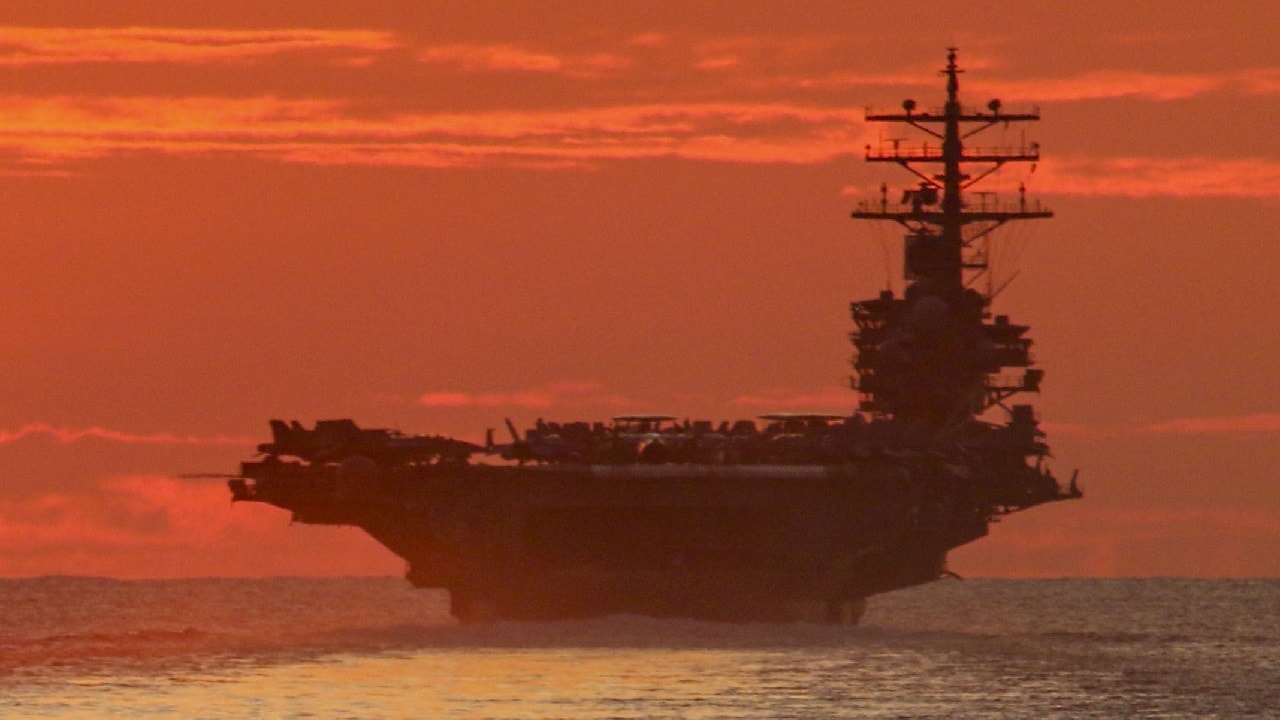Earlier this summer, the US Navy sent the USS Ronald Reagan to join a Carrier Strike Group in the East China Sea.
And in doing so, the Navy demonstrated its remarkable capabilities to America’s strongest rival, China.
Here Come the Aircraft Carriers
Aircraft carriers are technological marvels.
Essentially a carrier is a floating city – operating with upwards of 4,000 sailors, with unlimited range, and a a nuclear-powered endurance of up to 25 years.
Most importantly, the aircraft carrier allows a nation to project air power anywhere in the world; the carrier is the functional equivalent of building an airfield off the coast of anywhere, on a whim, in mere days.
Accordingly, carriers are a fearsome tool commanding respect and designating status. Indeed, the quantity and quality of a nation’s aircraft carriers can be used as a rudimentary metric to gauge that respective nation’s wealth and overall military capacity.
For example, France has an aircraft carrier. The UK has an aircraft carrier. India. Italy. Russia has one aircraft carrier that is falling apart. China is in the process of building up an aircraft carrier fleet (and with three carriers, currently has the world’s second largest stock of carriers).
And the United States has 11 aircraft carriers – far and away the largest aircraft carrier fleet in the world – a reflection of the US’s massive commitment to military spending.
The USS Reagan in the South China Sea
The Pentagon released imagery last June showing that the USS Ronald Reagan (CVN-76) was in the East China Sea, conducting exercises as a part of the larger Ronald Reagan Carrier Strike Group.
In the released imagery, the USS Reagan was involved in a replenishment at sea operation alongside the USS Antietam (CG-54). The Nimitz CSG also joined the exercises.
“The two carrier strike groups held drills with Japanese, French and Canadian ships from June 7-10 in the Philippine Sea and East China Sea as part of Indo-Pacific Command’s (INDOPACOM) Large Scale Global Exercises 2023 (LSGE23),” The USNI News reported. “The Reagan CSG participated in Exercise Noble Typhoon from June 10 to Wednesday with the three countries…the drill, part of LSGE23 took place from near Okinawa to the South China Sea.”
The exercises, the coordination between allies, the inclusion of the Reagan CSG – it’s all designed to show China that the US has the ability and willingness to balance in the Indo-Pacific region.
“This bilateral exercise reaffirms the strong will between Japan and the United States to respond to any situation, the readiness of Japan Self Defense Force and the U.S. Armed Forces, and further strengthens the deterrence and response capabilities of the Japan-U.S. Alliance,” said a statement from the Joint Staff Office (JSO) of Japan’s Ministry of Defense.
Tempering Chinese Ambitions
After conducting exercises with Japan, the Reagan CSG moved to the Indian ocean, to join Australian forces for an exercise known as Talisman Sabre 23.
Again, the Reagan CSG, participating in an Indo-Pacific exercise with an ally, sends a clear message to an increasingly assertive China: the US is still a major player in the Indo-Pacific.
While China has immense latent economic and military power (China is projected to overtake the US as the world’s largest economy), the US still can project force into China’s backyard.
Any sort of direct confrontation between the US and China would be globally catastrophic – hopefully, the US show of force serves to deter the Chinese from further assertions and from further territorial claims.
Harrison Kass is the Senior Editor and opinion writer at 19FortyFive. An attorney, pilot, guitarist, and minor pro hockey player, Harrison joined the US Air Force as a Pilot Trainee but was medically discharged. Harrison holds a BA from Lake Forest College, a JD from the University of Oregon, and an MA from New York University. Harrison listens to Dokken.
From the Vault
The Navy Sent 4 Battleships To Attack North Korea
‘Sir, We Hit a Russian Submarine’: A U.S. Navy Sub Collided with a Nuclear Attack Sub

